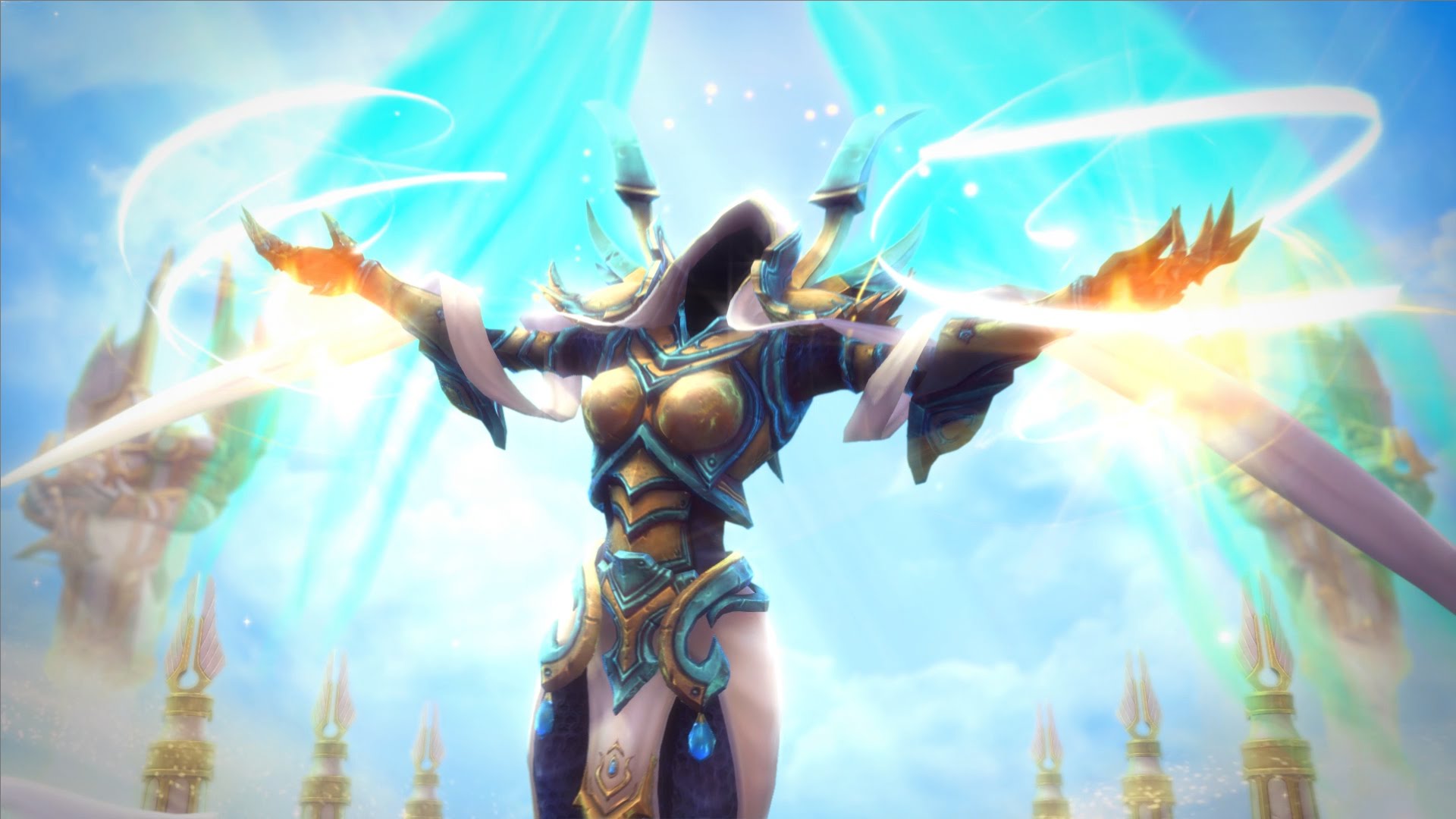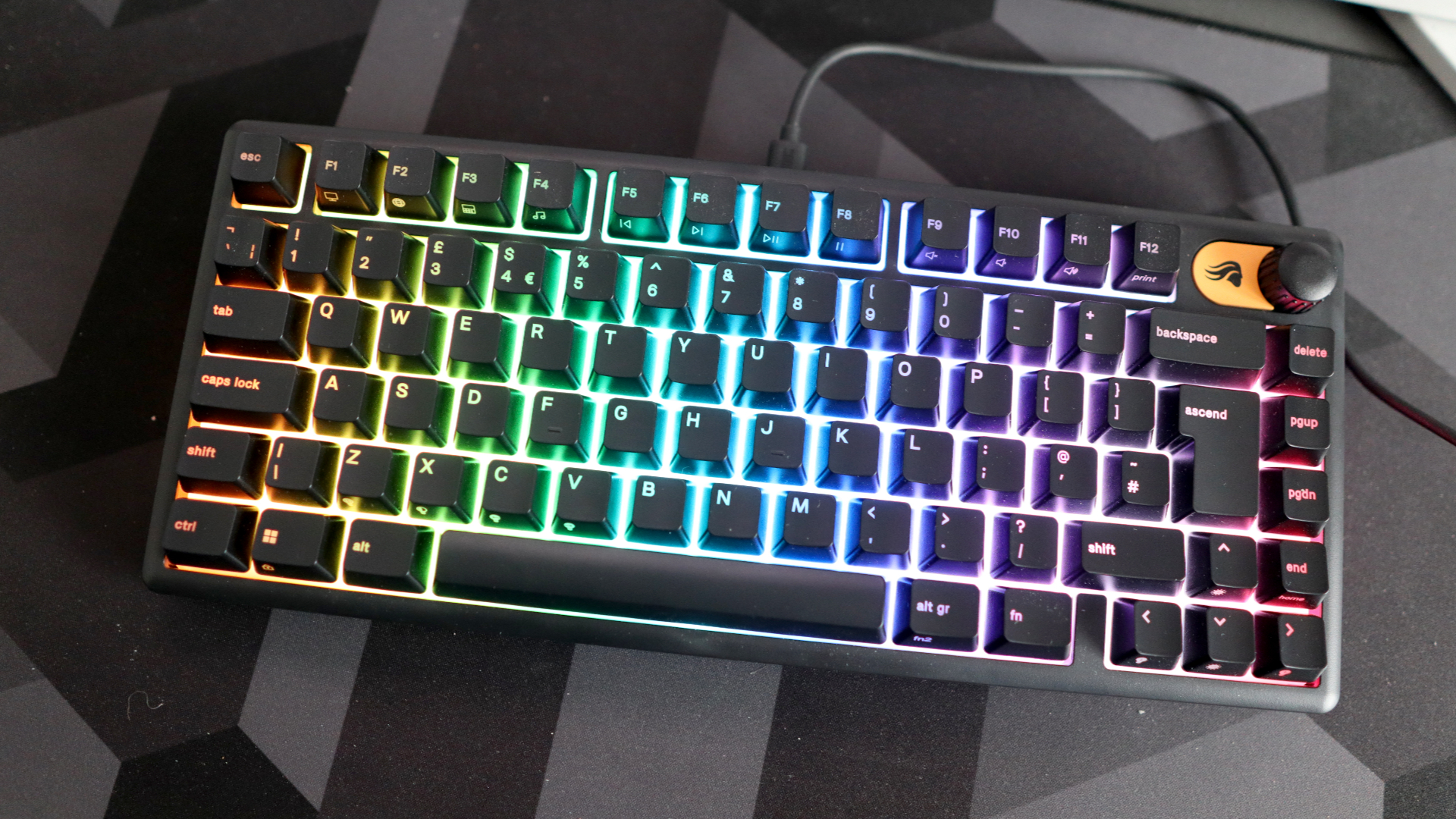Master Auriel in Heroes of the Storm
Become a beacon of hope for your team in Blizzard's MOBA.

Popular team compositions right now often rely on either two warriors on the team or two supports. Auriel fits nicely into a composition with two warriors due to her high healing output.
Hope returns to the Nexus with the arrival of Auriel in Heroes of the Storm. Hailing from Diablo, she’s the newest support in the game’s roster, bringing an entirely new resource mechanic to bear.
Unlike most other heroes, Auriel doesn’t use mana. Instead, she can build up ‘hope’ by dealing damage, which can then be spent to heal allies. Like Kharazim, she’s a support that relies on fighting regularly to reach her full potential. If you’re not in battle, you’re not going to be able to heal. That’s where the challenge lies in using Auriel effectively: being able to stay at a safe distance while maintaining a meaningful damage output so that you can keep healing teammates.
To do that well, you need to understand her abilities.
Trait/D: Bestow Hope
Auriel can link herself to an allied hero, meaning any damage they do will also increase her hope reserves. Early on, link to damage dealers, typically your assassins, to get the most out of this. It’s on a very short cooldown, so it’s good to swap regularly as spellcasters get rotations of abilities off, changing who you’re linked to depending on who is waiting for their cooldowns.
Q: Sacred Sweep
Not just for show, Auriel’s ribbons are a weapon too. Upon casting, she swings them in a cone, from the edges inwards, dealing extra damage to those caught in the centre. This ability doesn’t deal a massive amount of damage—although can sting if certain talents are chosen—but is on a relatively low cooldown, and is great for racking up Hope by hitting multiple enemies. Remember that you can spam it: no mana costs are a blessing!
W: Ray of Heaven
This is how Auriel gets to use her hope: she uses up all hope stored and heals allied heroes in an area for the amount consumed. Efficiency is key in using this ability: aiming it to hit multiple allies is required, and knowing when to use it is something you’ll learn over time. While it’s only on a four second cooldown, it’s sometimes best not to spam it and let hope build up a little more before putting down a huge heal for your teammates.
E: Detainment Strike
Auriel has no escapes, and this is really her only form of crowd control—she whips a ribbon forward, and the first enemy hero struck is hurt and knocked back. If they hit a wall, they will be stunned for 1.25 seconds, as well as take a little more damage. Use this to force enemies to disengage, or secure a kill if they’re near a wall. If someone is jumping on you or an ally, it’s a good way to force them back, but use this ability sparingly. It’s often Auriel’s only means, aside from the use of a heroic ability, to avoid death.
Keep up to date with the most important stories and the best deals, as picked by the PC Gamer team.
R: Resurrect and Crystal Aegis
Ten points to whoever can guess what Resurrect does. Channel on a dead ally’s spirit—which will appear in the place where they died—and you will revive them at 50% of their maximum health. There’s a drawback, though: it has a lengthy three second channel time and a very short range. It’s a way to prevent the snowballing that can happen lategame when long death timers can allow for enemies to take multiple objectives in a row.
Crystal Aegis, on the other hand, is made to prevent death: use it on Auriel or an allied hero and they will be placed in stasis for two seconds: immune to all damage and status effects, and unable to move or use abilities. After the two seconds, the hero will explode in a large area. This can be used to prevent burst—abilities like Pyroblast—as well as force the enemy to back off from an ally, as if they stay in the area, the damage done will whittle away some health as well as top up Auriel’s hope. Remember that it can also be used by opponents to time burst damage too, though. Chromie, for example, can easily time some abilities to hit the person in Crystal Aegis as soon as they come out.
Talents
Level 1: Auriel’s talents are typically rather easy to choose, with some variants available against specific team compositions. At level 1, the best choice is typically Increasing Clarity—the added damage is easy to stack up and means Auriel will be getting more hope when she hits someone with the centre of Sacred Sweep.
Righteous Assault can also be chosen—the decreased cooldown is great for spamming the ability, and synergises well with the typically chosen talent at level 13. The increased damage, though, is just more useful in more situations. Swift Sweep doesn’t add much other than making it easier to hit enemies with the centre of Sacred Sweep, something you shouldn’t need once you’re a strong Auriel player, and Searing Light just doesn’t deal enough damage to be worth the choice, especially as you’ll typically be a solo healer.
Level 4: There’s one great choice at level 4 and two disappointing ones. Majestic Span’s range increase is by far the most useful talent, as it also helps with stacking Increasing Clarity on top of allowing Auriel to stay further back: she’s naturally safer when she’s further away from enemies. The issue with Heavy Burden is that it relies on enemies making mistakes—something you should never rely on, as at high level they just won’t be hanging around near walls. Repeated Offense, on the other hand, just doesn’t add enough damage to be worthwhile, especially given the lengthy cooldown on Detainment Strike.
Level 7: This is another tier where one choice outshines the rest: Empathic Link. This talent means that not only are your assassins good choices for Bestow Hope, but your tanks are too, as they’ll be soaking up damage in most fights. Bursting Light could be taken if your team is heavy on damage and low on tanks, but that’s rare. Glimmer of Hope is simply not worth it, as you’ll typically get one regeneration globe per fight, if that, and Energised Cord pushes Auriel into attacking more: while this talent means Auriel can gain hope quickly, it forces her into autoattacking, meaning she won’t be sat in the relative safety of the backline quite so much. Without any escape, it’s hard to recommend this on Auriel.
Level 10: As fantastic as Resurrect sounds, it’s just never a viable heroic ability. The long channel time, combined with its miniscule range, means you’ll almost never have a chance to use it. By comparison, Crystal Aegis can save an ally from huge burst damage, act as a weak form of area denial, or even keep Auriel alive if enemies dive on her. There’s no reason to pick Resurrect over Crystal Aegis.
Level 13: At level 13, there are a few talents that can be chosen to adapt to the enemy’s composition. In most cases, Blinding Flash is the most useful—and does synergise incredibly well with Righteous Assault, if you took it at level 1—although all of the talents have their place. Converging Force is useful for disrupting channeled abilities, Piercing Lash is great when multiple enemies are likely to be diving at once, and Repelling Strike is good when you need one enemy to be pushed really darn far away after they dive. Typically, you’ll want to take Blinding Flash, though.
Level 16: This tier doesn’t depend on the enemy’s composition, but your own. The safest choice, generally, is Reservoir of Hope, as it prevents you from getting too much hope, as well as offering opportunities for massive heals. This works incredibly well with Empathic Link, too. Will of Heaven is often better if you’ve got one or more attacking heroes doing most of the work—it’s fantastic with Sgt. Hammer—while Wrath of Heaven is a good choice if multiple spellcasters are on your team.
Level 20: There’s two talents at level 20 to consider taking: Diamond Resolve and Shield of Hope. The former is a good choice if you’re often finding that enemies are focusing the ally you put in stasis, as the damage mitigation can be what saves their life if they take a chunk of hits afterwards. Shield of Hope, on the other hand, is the sort of ability that can turn a teamfight around. It’s an ability to be used towards the end of a fight, and, if you’ve got some tanky warriors, can give a gigantic shield if used correctly.
Light Speed is a cool talent, but ultimately it just won’t be used: a death around this point in the game either means you’re about to lose a teamfight or you’re forced to sit in your base until they respawn. Similarly, Angelic Flight shouldn’t be taken simply because you’re the support. You need to be sticking with your team, and Angelic Flight shouldn’t be needed to do that.
As a game goes on, it becomes harder and harder for Auriel to keep herself safe, as many heroes gain talents that make it easier to dive and kill the back line of heroes. The way you play Auriel will greatly change over the course of a game, and adapting to that is one of the skills you’ll need to learn.
During the start, and through the midgame, you’ll need to be aggressive with your Sacred Sweep and Detainment Strike, dealing damage to build hope, trying to stun enemies when they get caught out. As you hit level 13, you’ll have to make a transition into relying on teammates for gaining hope, which is why Empathic Link is so important. They will be dealing enough and taking enough damage to push you back to a dedicated healer role, rather than hybrid damage and healing.
Later on, your aim should be to negate burst using Crystal Aegis, and heal from as far away as possible. Ray of Heaven has a large range, so use it from a distance to heal either the front line or back line of heroes. Keeping yourself alive is your first priority—if you’re not alive, you can’t really keep your allies alive. As long as you survive, though, hope lives on.
Find all of our other Heroes of the Storm guides below:
Dragon Shire guide
Garden of Terror guide
Cursed Hollow guide
Blackheart’s Bay guide
Sky Temple guide
Tomb of the Spider Queen guide
Battlefield of Eternity guide
Infernal Shrine guide
Towers of Doom guide
Chromie guide
Medivh guide
Gul’dan guide

